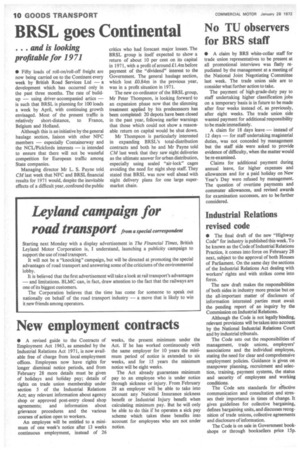Industrial Relations revised code
Page 12

If you've noticed an error in this article please click here to report it so we can fix it.
• The final draft of the new "Highway Code" for industry is published this week. To be known as the Code of Industrial Relations Practice, it comes into force on February 28 next, subject to the approval of both Houses of Parliament. On the same day the sections of the Industrial Relations Act dealing with workers' rights and with strikes come into force.
The new draft makes the responsibilities of both sides in industry more precise but on the all-important matter of disclosure of information interested parties must await thepending report of an inquiry by the Commission on Industrial Relations.
Although the Code is not legally binding, relevant provisions will be taken into account by the National Industrial Relations Court and by industrial tribunals.
The Code sets out the responsibilities of management, trade unions, employers' associations and the individual employee, stating the need for clear and comprehensive employment policies. Guidance is given on manpower planning, recruitment and selection, training, payment systems, the status and security of employees and working conditions.
The Code sets standards for effective communication and consultation and stresses their importance in times of change. It gives guidelines for collective bargaining, defines bargaining units, and discusses recognition of trade unions, collective agreements and disclosure of information.
The Code is on sale in Government bookshops or through booksellers price 15p.
























































































